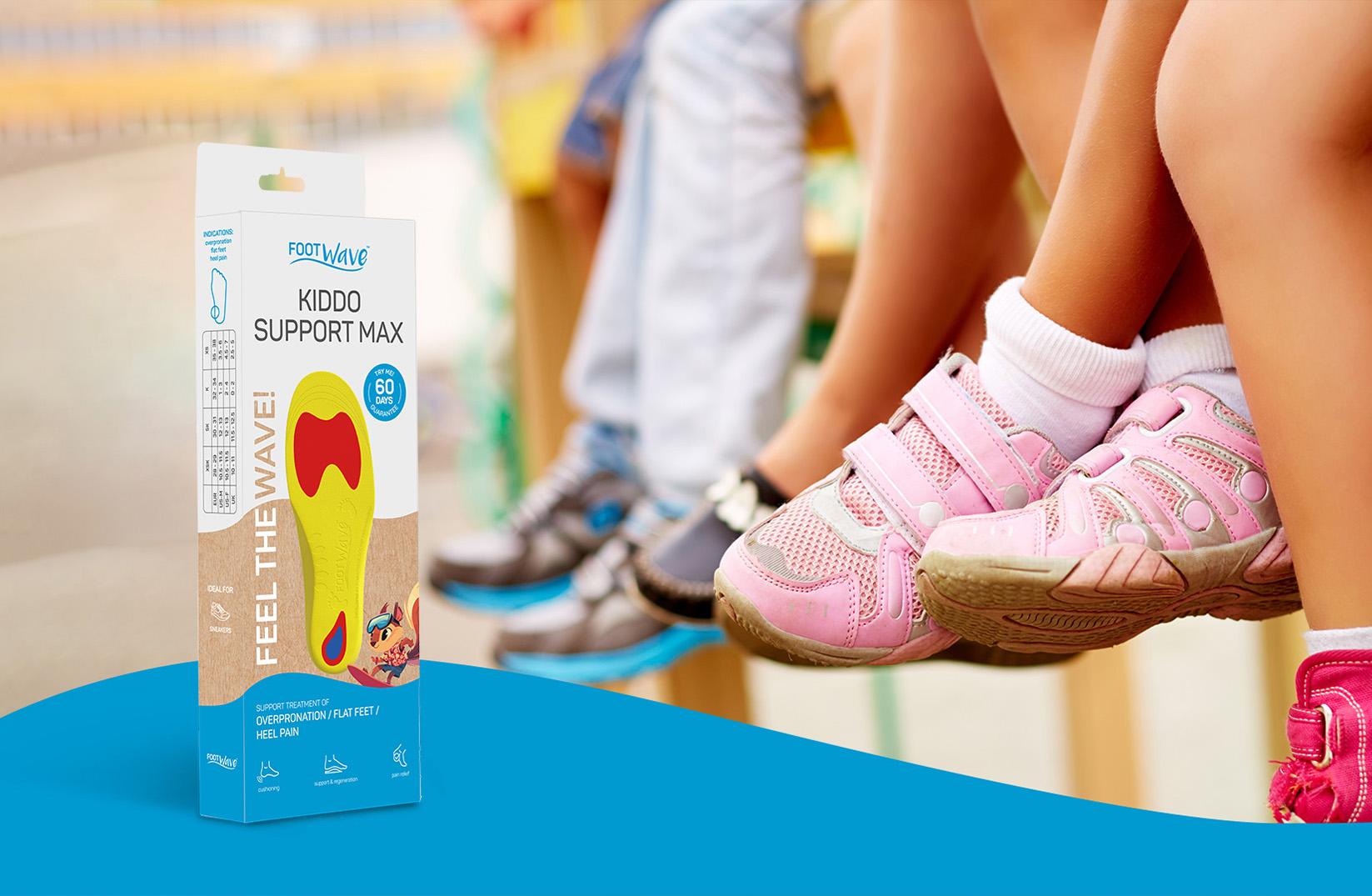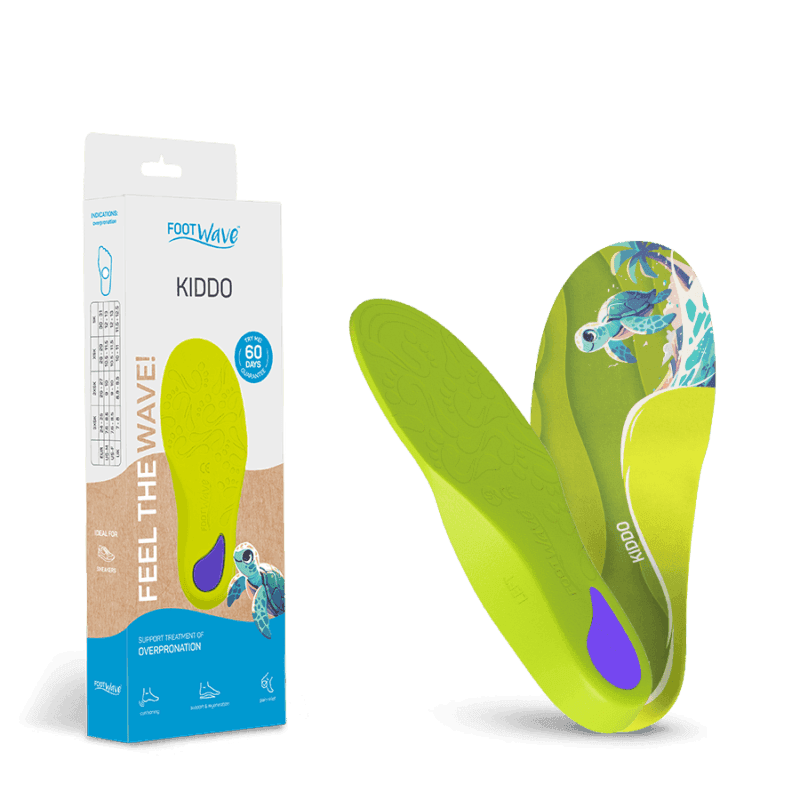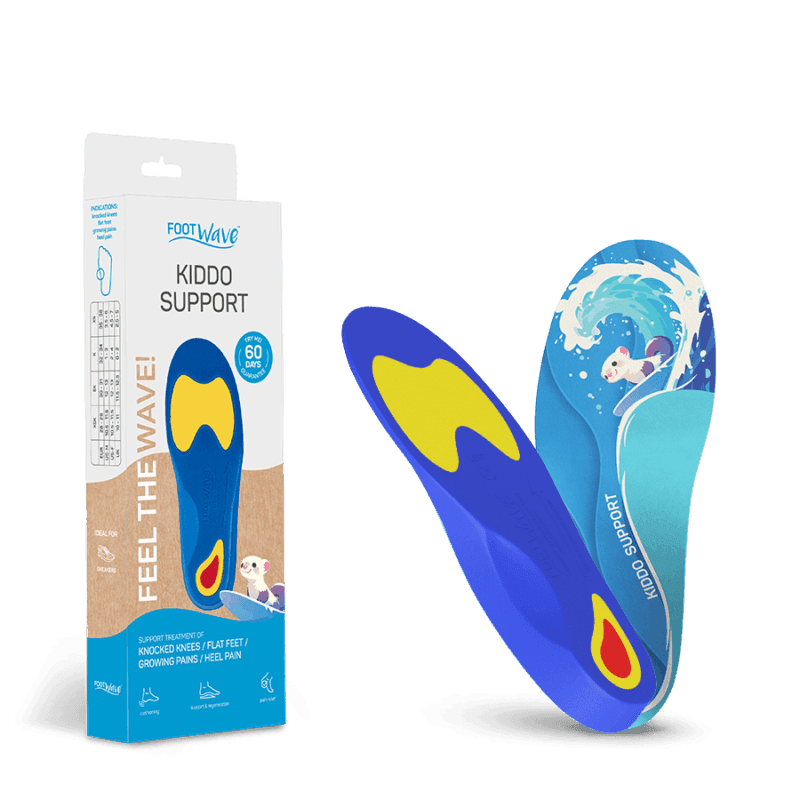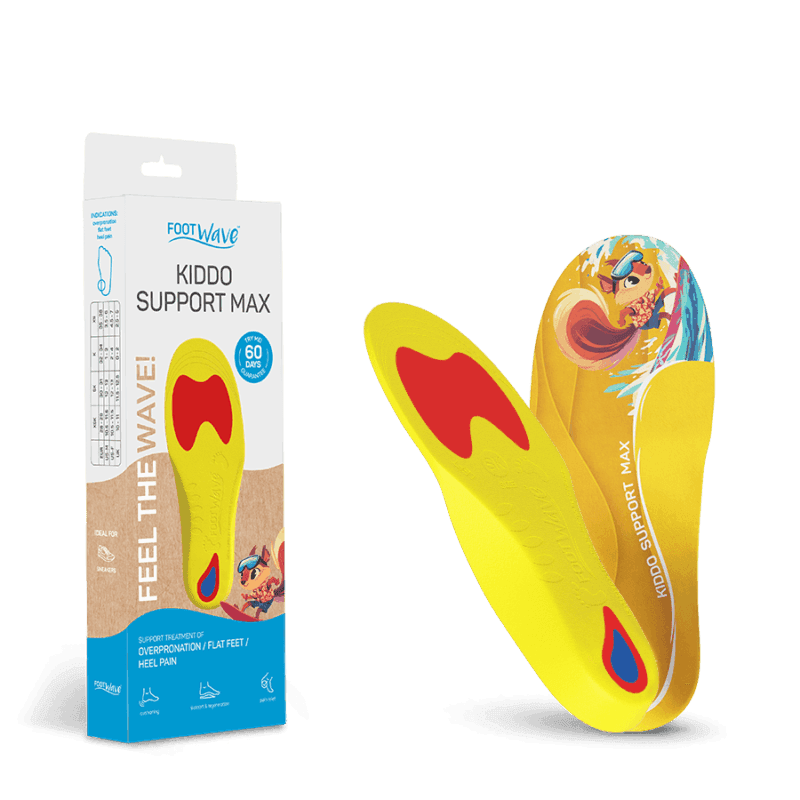We often have two big goals in mind
- helping our patients be as physically active as they want to be alongside other kids, and
- preventing future injuries.
With Back To School season approaching, we start to think about the kinds of activities kids will be doing in school and how we can help prepare them. So, while new backpacks, shoes, outfits, uniforms, and school supplies may be front of mind for parents, it’s also important to think about kids’ physical health. Healthy feet are the foundation for a healthy school year. Supporting your child’s steps today can help prevent problems tomorrow.
Foot orthotics may play a role in preparing your student for the physical demands ahead in recess, gym class, or school sports. While orthotics may feel like a medical device reserved for adults, they may be appropriate for your kiddo! Children’s feet, like the rest of their bodies, are rapidly growing! Orthotics may play a role supporting that growth to preserve their long term foot health and prevent other chronic musculoskeletal health conditions.

What are the different stages of foot growth?
1. Infant Stage (0–12 months)
What’s happening: Feet are soft, flat, and mostly cartilage. Their arches aren’t developed yet and their feet are very flexible
Key features: Fat pads on the soles give the appearance of flat feet but are there to support the growing foot as kids learn to pull up to standing and maybe start to take some first steps!
What to watch: Encourage barefoot time indoors to promote natural muscle development.
2. Toddler Stage (1–3 years)
What’s happening: Children begin walking, often with a wide stance and flat feet. This is totally normal!
Key features: The bones that form the arches are still developing and kids may appear unsteady or awkward when walking.
What to watch: Occasional toe-walking or walking pigeon toed may be normal but keep an eye out if this becomes a consistent pattern.
3. Early Childhood (4–7 years)
What’s happening: Foot structure becomes more defined and their arches begin to form.
Key features: Movements become more stable and kids aren’t able to do all sorts of functional tasks you might notice at this point that your kid has persistent flat feet or walks differently than other kids.
What to watch: If you’re concerned about the way your kid walks or moves, or the amount of physical activity they are able to participate in, this may be the time to act. Especially if flat feet are causing pain or limiting their ability to be a kid.
4. Middle Childhood (8–12 years)
What’s happening: Bones continue to harden and mature throught the body. Muscles and structures that support joints start to get stronger.
Key features: Most children develop a visible arch at this point but the foot starts to grow rapidly. The fast growth may make small issues more prevalent.
What to watch: Monitor for overpronation Where the arch collapses to the ground while walking. Also watch out for, heel pain (Sever’s disease), knee pain, or complaints of fatigue.
5. Adolescence (13–18 years)
What’s happening: Feet reach near-adult form as growth plates begin to close.
Key features: Your kids foot shape and arch structure are established at this point and it will follow them through adulthood.
What to watch: Keep an eye out for sports injuries that stick around or complaints of pain or fatigue after a period of activity.
What signs should you be on the look out for?
Signs that your kid may benefit from some targeted intervention may be big or small. Some obvious signs may include that your kid’s feet don’t look the same. While some variation between feet is normal big differences from side to side maybe a sign that you need to reach out to your kids medical team. Similarly if you look at your kid’s feet and they’re very flat when they’re standing or walking that could be a sign that they need more support. You may also see that their feet look different from their friends or they wear out one particular area of all their shoes.
Again, some variation is normal but big differences should clue you in. More global signs that should be investigated are more subtle and may include that your kid is unsteady on their feet, clumsy, or falls down a lot. Your kid may complain of foot, knee, hip or back pain after they’ve been standing walking or playing for a while. They may also be more tired than normal after a period of activity

What to do if you have a concern during any of these phases?
If you’re parental “Spidey senses” are tingling and you have a concern about your kids physical health – get it checked out. It’s better to start a conversation the conversation with the team (pediatrician, other specialist physicians, physical therapist, etc) and it turn into nothing rather than let issues persist. Some kids especially during their early and middle childhood phase may develop conditions that can follow them into adulthood. Addressing things as they arise gives your kid the best chance for long term musculoskeletal health.
What are potential treatment options?
The best treatment options for kids are those that are guided by a comprehensive health care team an individualized for your kid. Some options may include:
- Shoe recommendations: Not all shoes are created equally some are designed to promote stability of the foot and some are designed to promote flexibility of the foot. Matching the specific design and features of a shoe with the needs of your kid’s foot maybe enough to help your kid participate in all the activities they want to do.
- One-on-One Physical Therapy: A licensed physical therapist will evaluate the needs of your specific child and develop a comprehensive treatment plan to address those specific needs. On the results of the evaluation the physical therapist may call in other members of the health care team, like occupational therapy for example.
- Foot orthotics: There are a wide variety of orthotic products out on the market which range from over the counter to custom made options. Orthotics may help by improving alignment of the foot and leg to guide the foot into a more natural position and promote typical foot growth. They may help by reducing fatigue because better support means less strain on muscles and joints. Finally, they may help prevent future injury. By promoting good alignment orthotics can help alleviate excess stress on joints in the foot and the entire leg. This might be very important for kids who are extremely active.
How do you choose an orthotic?
If you decide that an orthotic is right for your kid there are several different avenues you can pursue. An over the counter option may be the least expensive option however they cannot be individualized to what your kids foot needs. This means they may not provide the support or correction that would help your kid.
Custom made orthotics might be an option however they are often costly, take a long time to make, and are made out of very stiff materials. The foot does need support but it also needs the ability to flex to accommodate activity and cushion forces. Dynamic orthotics, or insoles that provide both support and allow the foot to move through some natural motion might be the best of both worlds.
Dynamic insoles help the foot maintain a stable arch during movements when the foot needs stability and allows flexibility when and where the foot needs to bend. They are also a lower cost option which can also be customized to an individual foot.
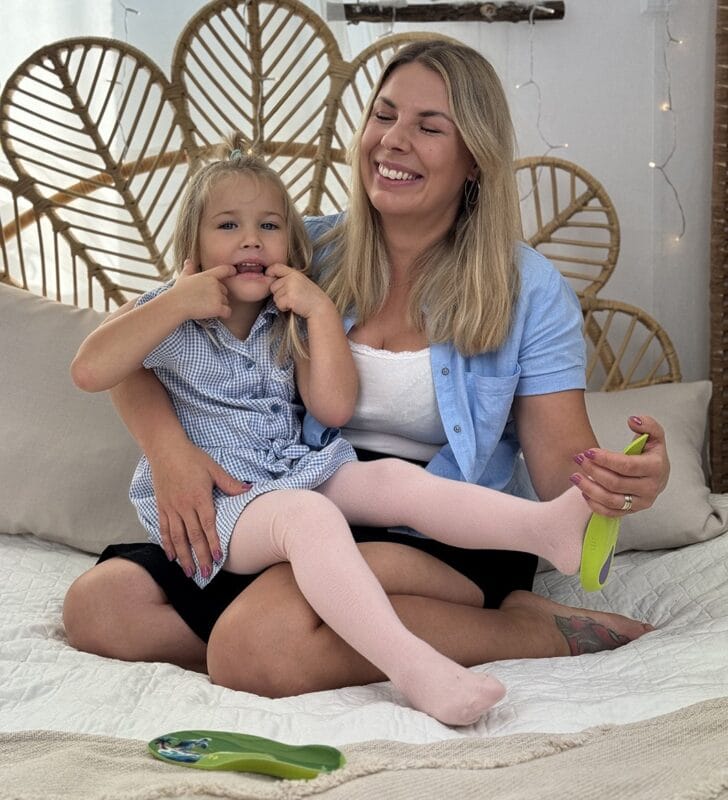
What are the FootWave Options for Kids?
Footwave has developed a series of dynamic insoles for Kids, each with a specific kid in mind. Each insole is designed to maximize comfort while providing different levels of support or correction while keeping costs accessible. Be sure to consult with your kids health care team to get the best match for your kid!
Footwave KIDDO insoles
These Level 1 insoles provide dynamic support for ovepronation and foot alignment. The KIDDO insoles provide gentle support and promote healthy growth without significant rigid correction.
The KIDDO can help your child naturally overcome overpronation which can help with long term foot, knee, hip, and back pain. With a reasonable price tag, a fun, bright green color and a cute turtle mascot, these are a great starting point for parents focused on long term health for kids who don’t have significant alignment issues.
Footwave KIDDO SUPPORT insoles:
Our Level 2 insole provide essential arch support for kids with flat feet. The KIDDO SUPPORT provide additional correction to promote natural alignment of the arch, foot, knee, and hip. They also include advanced cushioning and shock absorption for comfort and ease of wear.
This insole features a cool, deep blue covering with a cute surfing weasel. The best part is that this insole is similar to some of the adult varieties, so as your kid grows into and beyond adolescence, there’s an insole ready to fit larger feet with the same features. This means no down time or readjustment period!
Footwave KIDDO SUPPORT MAX:
The Level 3 insole targets kids who have flat feet deformities which visibly impact the alignment of the hips and knees while both standing and moving. This insole, with is bright yellow cover and adorable squirrel provides correction of the entire leg. It’s aimed at restoring natural movement patters of the leg for kids with fallen arches. It is also built with extra comfort in mind given that it is the stiffest of the three options. The KIDDO SUPPORT MAX also has an adult parallel, providing the same seamless transition from kid sizes to adult sizes.


